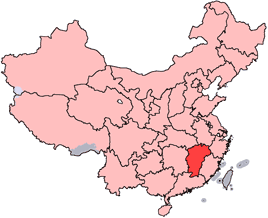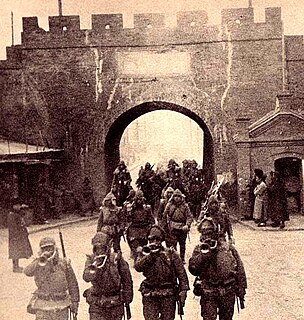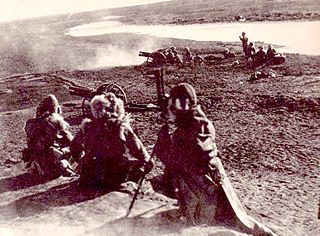 W
WThe Ådalen shootings was a series of events in and around the sawmill district of Ådalen, Kramfors Municipality, Ångermanland, Sweden, in May 1931. During a protest on 14 May, five people were killed by bullets fired by troops called in as reinforcements by the police.
 W
WAhmed Barzani revolt refers to the first of the major Barzani revolts and the third Kurdish nationalistic insurrection in modern Iraq. The revolt began in 1931, after Ahmed Barzani, one of the most prominent Kurdish leaders in southern Kurdistan, succeeded in unifying a number of other Kurdish tribes. The ambitious Kurdish leader enlisted a number of Kurdish leaders into the revolt, including his young brother Mustafa Barzani, who became one of the most notorious commanders during this revolt. The Barzani forces were eventually overpowered by the Iraqi Army with British support, forcing the leaders of Barzan to go underground.
 W
WThe Chilean naval mutiny of 1931 was a violent rebellion of Chilean Navy enlisted men against the government of Vice President Manuel Trucco.
 W
WThe encirclement campaign against the Northeastern Jiangxi Soviet was a campaign launched by the Chinese Nationalist Government intended to destroy the communist Chinese Soviet Republic and its local military forces. It was met by the Communists' Counter-encirclement campaign at Northeastern Jiangxi Soviet, also called the Counter-encirclement campaign at Northeastern Jiangxi Revolutionary Base. The Nationalist campaign lasted from December 1930 to July 1931, and resulted in the destruction of the target base area.
 W
WThe encirclement campaign against the Hunan-Hubei-Jiangxi Soviet was a military campaign launched by the Kuomintang Nationalist Government against the communist Soviet force in the Hunan-Hubei-Jiangxi. It was responded to with the Communists' Counter-encirclement campaign at the Hunan-Hubei-Jiangxi Soviet, also called their Counter-encirclement campaign at the Hunan-Hubei-Jiangxi Revolutionary Base. The local red army successfully defended this soviet republic against the government attacks from December 1930 through to May 1931.
 W
WThe Battle of Evarts occurred in Harlan, Kentucky during the Harlan County Wars. The coal miners desired improved working conditions, higher wages, and more housing options for their families. These reasons, along with other factors, led the miners to go on strike. It ended when the Kentucky National Guard was called in to break it up. This battle lasted approximately 15 minutes.
 W
WThe first encirclement campaign against Jiangxi Soviet was a series of battles launched by the Chinese Nationalist Government intended to annihilate the Chinese Red Army, and destroy the Chinese Soviet Republic. The communists later responded with the first counter-encirclement campaign at Central Soviet, also called by the communists as the first counter-encirclement campaign at Central Revolutionary Base, in which the Red Army successfully defended the Soviet Republic in the southern Jiangxi province against Nationalist attacks from November 1930 to January 3, 1931.
 W
WThe Japanese invasion of Manchuria began on 18 September 1931, when the Kwantung Army of the Empire of Japan invaded Manchuria immediately following the Mukden Incident. At war’s end in February of 1932, the Japanese established the puppet state of Manchukuo. Their occupation lasted until the success of the Soviet Union and Mongolia on Manchurian Strategic Offensive Operation in mid-August of 1945.
 W
WThe Jiangqiao campaign was a series of battles and skirmishes occurring after the Mukden Incident, during the invasion of Manchuria by the Imperial Japanese Army, prior to the Second Sino-Japanese War.
 W
WThe Jinzhou Operation or Chinchow Operation was an operation in 1931 during the Japanese invasion of Manchuria, which was a preliminary, contributing factor to the outbreak of the Second Sino-Japanese War in 1937.
 W
WThe Mukden Incident, or Manchurian Incident, was an event staged by Japanese military personnel as a pretext for the 1931 Japanese invasion of Manchuria.
 W
WThe Pacification of Manchukuo was a Japanese anti-insurgency campaign during the Second Sino-Japanese War to suppress any armed resistance to the newly established puppet state of Manchukuo from various anti-Japanese volunteer armies in occupied Manchuria and later the Communist Northeast Anti-Japanese United Army. The operations were carried out by the Imperial Japanese Kwantung Army and the collaborationist forces of the Manchukuo government from March 1932 until 1942, and resulted in a Japanese victory.
 W
WThe Resistance at Nenjiang Bridge was a small battle fought between forces of the Chinese National Revolutionary Army against the Imperial Japanese Army and collaborationist forces, after the Mukden Incident during the Invasion of Manchuria in 1931, prior to the start of the Second Sino-Japanese War. It marked the start of the Jiangqiao Campaign.
 W
WThe second encirclement campaign against Jiangxi Soviet was a series of battles launched by the Chinese Nationalist Government in the hope of encircling and destroying the Jiangxi Soviet after the previous campaign had failed. The Red Army repelled the encirclement by launching their second counter-encirclement campaign, also called by the communists as the second counter-encirclement campaign at Central Revolutionary Base, in which the local Chinese Red Army successfully defended the Jiangxi Soviet against the Nationalist attacks from April 1, 1931, to May 31, 1931.
 W
WThe Sino-Tibetan War was a war that began in 1930 when the Tibetan Army under the 13th Dalai Lama invaded Xikang and Yushu in Qinghai in a dispute over monasteries. Ma clique warlord Ma Bufang secretly sent a telegram to Sichuan warlord Liu Wenhui and the leader of the Republic of China, Chiang Kai-shek, suggesting a joint attack on the Tibetan forces. Their armies rapidly overwhelmed and defeated the Tibetan Army.
 W
WThe Stennes Revolt was a revolt within the Nazi Party in 1930-1931 led by Walter Stennes (1895–1983), the Berlin commandant of the Sturmabteilung (SA), the Nazi's "brownshirt" storm troops. The revolt arose from internal tensions and conflicts within the Nazi Party of Germany, particularly between the party organization headquartered in Munich and Adolf Hitler on the one hand, and the SA and its leadership on the other hand. There is some evidence that Stennes may have been paid by the government of German chancellor Heinrich Brüning, with the intention of causing conflict within the Nazi movement.
 W
WThe third encirclement campaign against Jiangxi Soviet was the third campaign launched by the Chinese Nationalist Government in the hope of destroying the Red Army in Jiangxi. It was launched less than a month after the previous campaign failed. However, this encirclement was repelled by the Red Army's third counter-encirclement campaign at the Central Soviet, also called as the third counter-encirclement campaign at the Central Revolutionary Base.